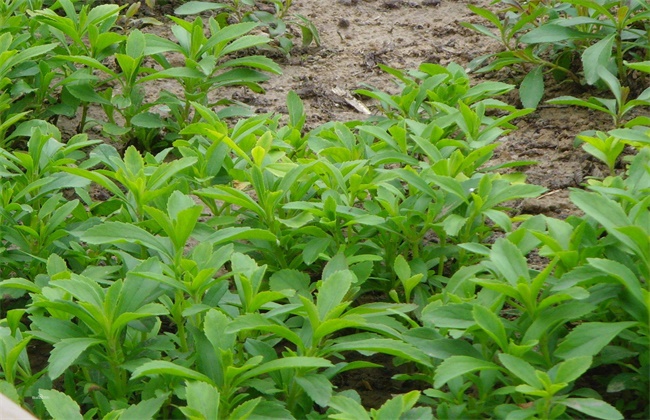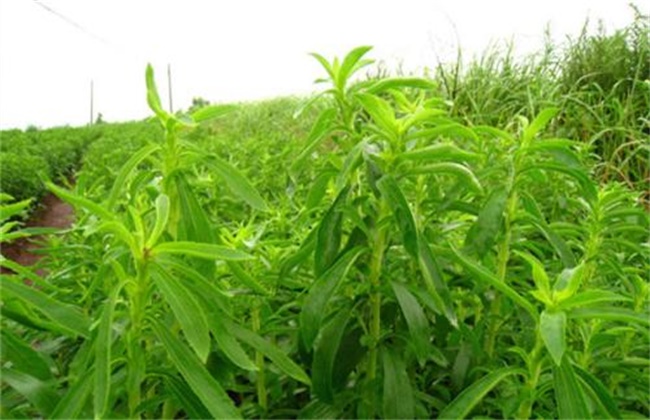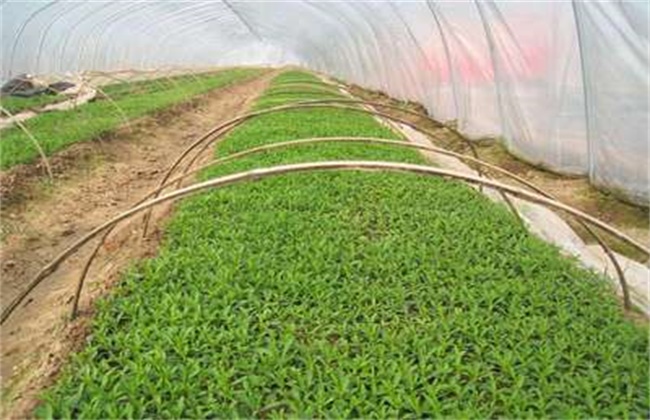Seedling raising techniques of stevia rebaudiana
Stevia is the sweetest sugar plant found so far. Stevioside extracted from its leaves is a white crystalline powder whose sweetness is 200 to 300 times that of sucrose, so it is also called plant saccharin. Stevia can be planted in both the south and the north, so do you know what seedling techniques it has? Let's take a look at it with the editor.

1. Cuttage seedling
Cutting seedling can maximize the advantages of retaining varieties, and has the advantages of fast propagation, simple operation and low cost, so cutting seedling is the best choice for southern stevia planting. First of all, we should choose the place with fertile soil, leeward to the sun, convenient water source and high terrain to build the seedbed, and then raise seedlings from August to October. Cuttings are cut directly from the top of field stevia plants, and the cuttings used for seedling propagation in spring and winter can be cut from autumn seedlings, and it is also appropriate to cut 4-5 pairs of cuttings. The appropriate cutting time is August-October in autumn or March-April in spring, which can be kept at 20-25 degrees through a small arch shed and covered with a sunshade net. According to the time deficiency, the cutting density can be sparsely planted in autumn and winter to meet the space needed for plant growth for a long time, while cuttings in spring can be planted densely.
2. Overwintering propagation of old roots
The old root of stevia can be used to create a suitable environment to ensure its safe overwintering in winter. after the temperature rises in early spring, a certain number of seedlings can germinate in the nodes of the old root. When the seedlings grow to 4-5 leaves, they can be used for spring propagation and cuttings. it can also be planted directly. The old root should be the old root of field stevia with good variety, high purity and strong growth. When the average temperature is 15-20:00 and the weather is clear, dig out the old roots, sort out and remove the residual branches and leaves, retain them after 2-5 cm, pseudo-plant them in the ditch, cover the fine soil, and then cover with plastic film to keep warm. If the cold current needs to cover grass curtains and other thermal insulation materials, so that the temperature in the film is not lower than minus 3 degrees, to ensure that it is safe to survive the winter, after the temperature rises in the next year, the old roots can germinate seedlings.
3. Seed propagation
Although stevia grows widely, but affected by low temperature in the north, seedlings and old roots often can not survive the winter safely, so most of the seedlings are raised by seeds in the north. The sowing time is generally stable above 10 degrees in early spring, and the nursery land is also a plot with fertile soil, leeward to the sun, convenient water sources and high topography. Before sowing, the seeds need to be dried and rubbed off to improve the germination rate and germination potential, and then soak the seeds in warm water, which can also be soaked with chemicals to prevent the spread of diseases and insect pests. Sowing the seeds and fine sand evenly and then sowing or strip sowing, generally sowing 3-5 grams per square meter, covering a layer of thin soil after sowing, and gently pressing with wood, so that the seeds and soil are in close contact, and the seedbed can be covered with straw, heat preservation and moisturization. to facilitate emergence.
The above is the introduction of stevia breeding technology, hope to help you, want to know more related knowledge, please follow us.
Related
- Fuxing push coffee new agricultural production and marketing class: lack of small-scale processing plants
- Jujube rice field leisure farm deep ploughing Yilan for five years to create a space for organic food and play
- Nongyu Farm-A trial of organic papaya for brave women with advanced technology
- Four points for attention in the prevention and control of diseases and insect pests of edible fungi
- How to add nutrient solution to Edible Fungi
- Is there any good way to control edible fungus mites?
- Open Inoculation Technology of Edible Fungi
- Is there any clever way to use fertilizer for edible fungus in winter?
- What agents are used to kill the pathogens of edible fungi in the mushroom shed?
- Rapid drying of Edible Fungi



